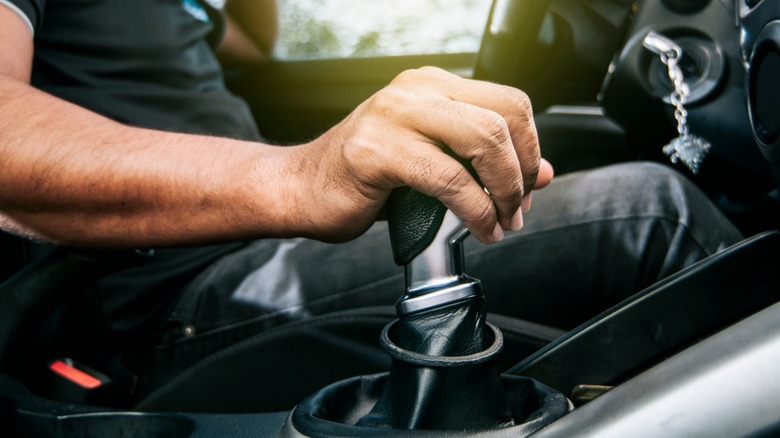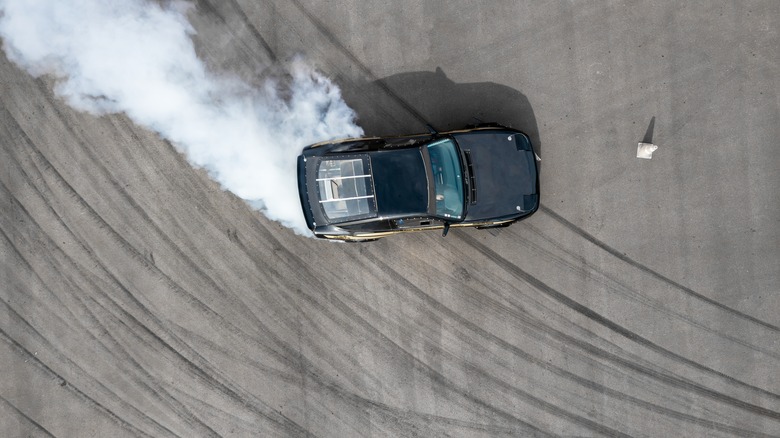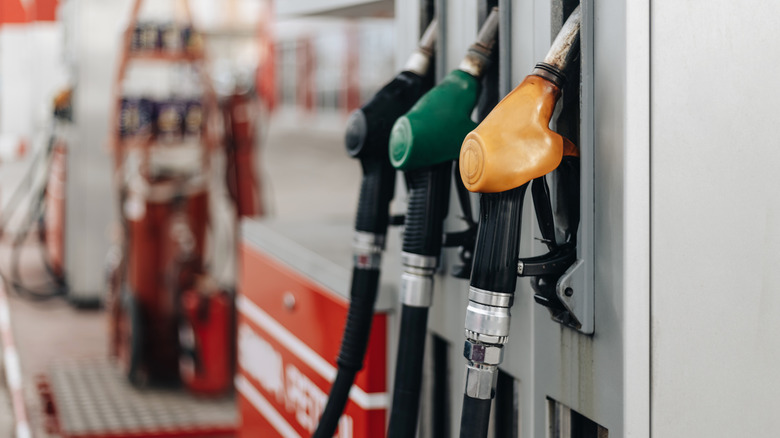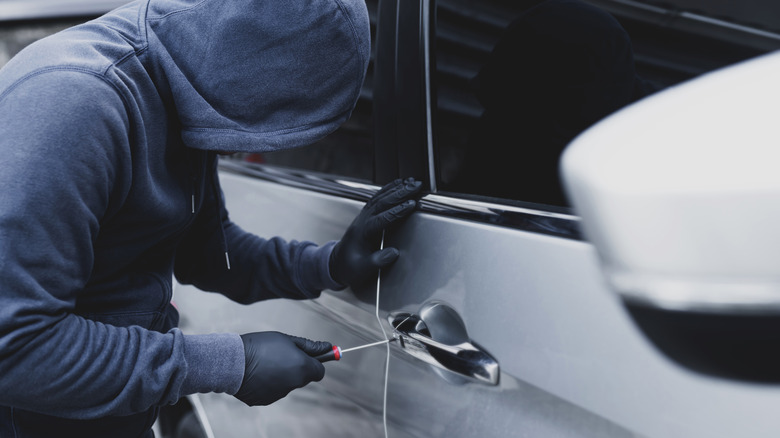5 Factors That Make Manual Transmissions Worth The Learning Curve
Driving stick might seem like a party trick, or something you can loosely brag about when talking about cars. But it's actually a highly practical skill — even in the days of hybrids, EVs, and automatic gearboxes. Yes, there is a bit of a learning curve involved at first. But once you get a grasp of clutch control, and you recognize the clues telling you to shift up or down, it all becomes very natural. You aren't really thinking about shifting, and unless you're stuck in frustratingly heavy traffic it's every bit as convenient as an automatic.
It's also a lifelong skill, too — it's just like riding a bike. Once you've become proficient at driving stick, you can go many years without driving a car with a manual gearbox and still mostly retain the necessary skills to pick it back up. You may experience a little rustiness, but after a few hours behind the wheel and maybe a stall or two it will be like you never stopped driving stick. Here are just a few reasons why learning to drive a manual vehicle is worth the effort.
A wider range of vehicles becomes available to you
As with anything that increases your skill set, learning to operate a clutch and a stick shift increases the number of options you ultimately have when looking at automobiles. If you're a fan of classic cars, then learning to drive stick is in your best interests. While the automatic gearbox has been standard in American cars since the mid-70s, many classics around today are manual. So if you're looking for your grail car, limiting yourself to an automatic might see you missing out on an otherwise perfect vehicle. Then there's the fact manual gearboxes offer a purer and more engaging driving experience. It's why many high-end cars, like the Porsche 911, offer a manual option to this day. For many, owning an automatic Porsche is basically criminal. You'd be missing out on one of the vehicle's key elements. If you're buying new, opting for a manual gearbox can also knock a few thousand dollars off the cost of your vehicle.
There are also benefits when traveling. Automatic vehicles tend to dominate the U.S. market, but many other countries utilize vehicles with a manual transmission. For example, around 80% of cars in Europe are manual vehicles. So if you want to borrow a car from a friend, or rent one while traveling abroad, not being able to drive stick could severely limit your options and may even end up costing you more money.
You get a greater level of control
A manual gearbox tends to give drivers a greater level of control over their vehicles when compared to an automatic. This is very apparent when maneuvering. Engaging the clutch in first will make the vehicle crawl along. The power can be controlled far more precisely than pressing and letting off the brake in an automatic. When moving, drivers can also choose what gear they want to be in, and how many revs they want to use. This can be handy if you need a quick burst of speed when overtaking another car. Simply drop a gear, enjoy the increased acceleration, and then shift back up when overtaking is complete.
It's safer in snow too. If you live somewhere with rough winters, then a manual transmission can give you an edge when things get a little frosty. Selecting a high gear and operating with low revs gives the vehicle a lot more traction. This applies when pulling out from a parking spot, or simply driving along on a difficult bit of road. You also gain the ability to engine brake. This involves shifting down instead of pressing the brake, and letting the engine slow the vehicle down. While it requires a little more forward planning than just pressing a pedal, using this method greatly reduces the chance of skidding on snow and ice.
They can be more fun
If you aren't just using a vehicle to get from A to B, then it's possible to have a little more fun in a manual vehicle than you can in an automatic. Drifting is one activity is that is easier with a stick shift. In a manual, you can get the car moving, leave it in second, and gently press the gas pedal until the back end loses traction. Yes, it's also possible in an automatic and other factors like rear wheel drive are more important, but a manual transmission makes it all so much easier. It also won't wear out your e-brake like drifting in an automatic will. Admittedly, there is a little bit of a learning curve. You'll need to remember to drop the clutch before you brake, which may slip your mind if you end up spinning out. But overall, the increased control you get with a manual transmission is perfect for activities like drifting.
Equally, if you're traveling down a road at around 20 miles per hour and really want to feel a burst of speed, engaging the clutch, upping your revs, then dropping the vehicle into second should make even a busted old clanger pull like a Hellcat for a very brief period. This is because of two things, first momentum helps, and second the vehicle is operating within its power band. It doesn't have to waste energy getting off the line and moving all of that weight, instead the engine's force can go into making the vehicle move faster.
Fuel economy should improve
Switching to a stick shift isn't all fun and games. There's actually a financial and environmental reason to make the change — and it's related to fuel economy. Manual vehicles are likely to be more economical for a couple of reasons. The most obvious one comes down to weight. The difference in mass between similar manual and automatic transmissions can be as much as 75 pounds. The EPA estimates that an extra 100 pounds will drop a vehicle's fuel economy by 1%. This might not sound like a lot, but with drivers spending an average of $20,000 on gas per 100,000 miles driven, the difference can add up over a vehicle's lifetime.
With older vehicles, engines tend to have an easier time running through a manual gearbox than an automatic one. The difference in this case can be vast, accounting for between two and five miles per gallon in fuel savings.
The increased level of control also plays a part. A vehicle is at its most economical with the engine operating between 1,500 and 3,000 revs, and overall speed hovering around the 55 mph mark. While many automatic gearboxes operate around these parameters, some can be far more aggressive. A manual gives you the option to drive with performance in mind when you feel like it, but also lets you drive as economically as possible should you choose to do so. Altogether, these differences can save a driver thousands of dollars over the years.
It's the best anti-theft device in North America
This point doesn't really apply if you live outside of the United States, as people in other parts of the world tend to learn how to drive in a manual. For example, Britain has two types of license. One is for automatic cars only, while another covers both manual and automatic vehicles. The latter requires someone to pass a driving test in a car with a manual transmission, and not doing so can severely limit the number of cars you have access to, so most people opt for the "full license." In the U.S., it's a totally different story.
Fewer than one in five Americans can "drive stick" according to The Wall Street Journal. Even then, saying you can drive a manual and actually doing so competently are two entirely different things. The people with this skill are likely older, and may not have had access to a gearstick in several decades. Then there's the number of manuals on the road in the U.S. — which is only 1% of all cars, according to the same piece. Given the rise of electric cars, there's likely to be less opportunity to learn going forward.
On the plus side, this means your average thief is probably incapable of getting a manual vehicle out of the parking lot. Instead, they'll probably stall multiple times, panic, and cause somewhat of a scene if they try. More likely, the would be car thief will see the gear stick, realize their limitations, and move on to an easier target. The most modern anti-theft systems can be beaten with the right know-how, so a stickshift's relative obscurity may save your pride and joy.





